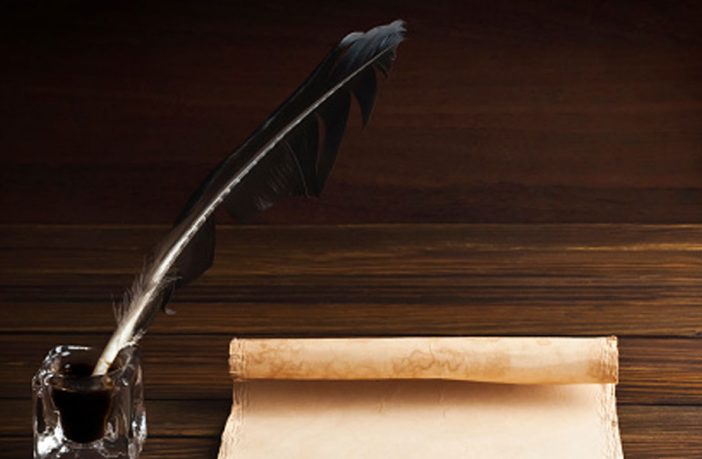Stunningly cinematic and vehemently Scottish, the latest version of Macbeth has opened in UK cinemas. Directed by Justin Kurzel, it’s a post-Braveheart affair, heavy on the mud and gore. In the title role Michael Fassbender exudes intensity and desperation, fuelled by the death of his young son. Marion Cotillard is wraith-like as his broken-hearted wife. The world they inhabit is steeped in violence and war, set against the epic mountain landscape.
But why is the Scottish play so popular? It is an enduring inspiration for both writers and directors: one of the most frequently produced of all Shakespeare’s plays, it has also lent itself to countless stage interpretations and inspired films as diverse as Akira Kurosawa’s adaptation Throne of Blood and Francis Ford Coppola’s The Godfather trilogy, a modern interpretation of the “blood will have blood” theme. Stage versions have included a “voodoo” take on the tragedy directed in Harlem by Orson Welles and Trevor Nunn’s chilling RSC production, starring Judi Dench and Ian McKellen, filmed in 1978.
The story is familiar even to those who have never seen a Shakespeare play. Macbeth meets three witches who predict he will become the Thane of Cawdor, then king. Unable to resist temptation and egged on by his wife, he murders Duncan. Carnage ensues, and Macbeth murders his friend Banquo and the wife and children of arch-rival Macduff. All to no avail – eventually he meets a gory end.

Inspiring horror.
STUDIOCANAL
Novelists and TV writers as well as film makers have drawn on this blood-soaked parable. Patricia Highsmith’s The Talented Mr Ripley tells the story of a ruthless sociopath who murders a wealthy playboy and steps into his life – obliging him to commit further murders to cover his tracks. Vince Gilligan’s TV series Breaking Bad has the cancer-stricken chemistry teacher Walter White turn from timid middle American to amoral crime lord after taking the momentous decision to start making crystal meth.
As imaginative source material, Macbeth has much to offer. It taps into aspects of human psychology which are difficult to accept, such as the possibility that blood feuds satisfy some deep impulse in our nature. It connects to a bleak and unforgiving landscape, in which the hubris of human beings is engulfed by the mysterious realm which they inhabit.
Central to this latest Macbeth is the conflict between men and women. The witches – four, not three – appear on the battlefield at the start. They are still and impassive in the midst of the mayhem, more like soothsayers than malevolent hags. In the panoramic crowd shots, the camera lingers on women and children, and we’re aware of their vulnerability. Most shockingly, Macduff’s wife and small children are publicly executed by Macbeth’s henchmen rather than being murdered in secret as they are in the play.

Wraith-like.
STUDIOCANAL
At the heart of this is Marion Cotillard’s Lady Macbeth. Haunted by her dead child, her pale face is face riven with grief at the horror that her ambition has unleashed. In the play, her insanity is expressed by night walking, and we draw our own conclusions about its causes. Here, we watch her mental state unravel as she witnesses her husband’s descent into brutal sadism. She is anguished and afraid, quickly aware of the limits of her female potency.
This focus may seem like a contemporary interpretation, but it also plays to an element that is there in Shakespeare’s drama. As Terry Eagleton points out, the witches appear on stage before any other characters. Indeed he suggests that they are the heroines of the play. One of the hypnotic pleasures of the tragedy is the magnificent insubordination of Lady Macbeth, raging against the limitations of her gender.

Something wicked this way comes.
STUDIOCANAL
In my own writing, this female subversion was a cue for a novel about her tragedy, rather than Macbeth’s. Dark Aemilia is an imagining of the writing of the play in the early 17th century, a period of witch-hunts and royal paranoia. I wanted to explore the idea of a woman who over-reaches, just as Macbeth over-reaches, and the forces that drive her to engage with black magic.
Macbeth is like a force-field rather than a conventional play, a ley-line between rationality and superstition. Allegedly cursed, it carries a charge of pure evil. (Its nearest recent equivalent is the film The Exorcist, which is similarly plagued with rumours about catastrophes affecting its cast and those associated with it.) Both simple and malleable, this tragedy is open to endless interpretation.
The obsessions that lie at its heart will never be out of date, sadly. At the end of Kurzel’s film, the sky turns orange with a fire storm as Great Birnam wood burns. It looks like Hiroshima or Nagasaki. It looks like the burning oil wells of the Gulf war. It looks like the end of the world.
![]()
Sally O’Reilly, Lecturer in Creative Writing, The Open University
This article was originally published on The Conversation. Read the original article.



